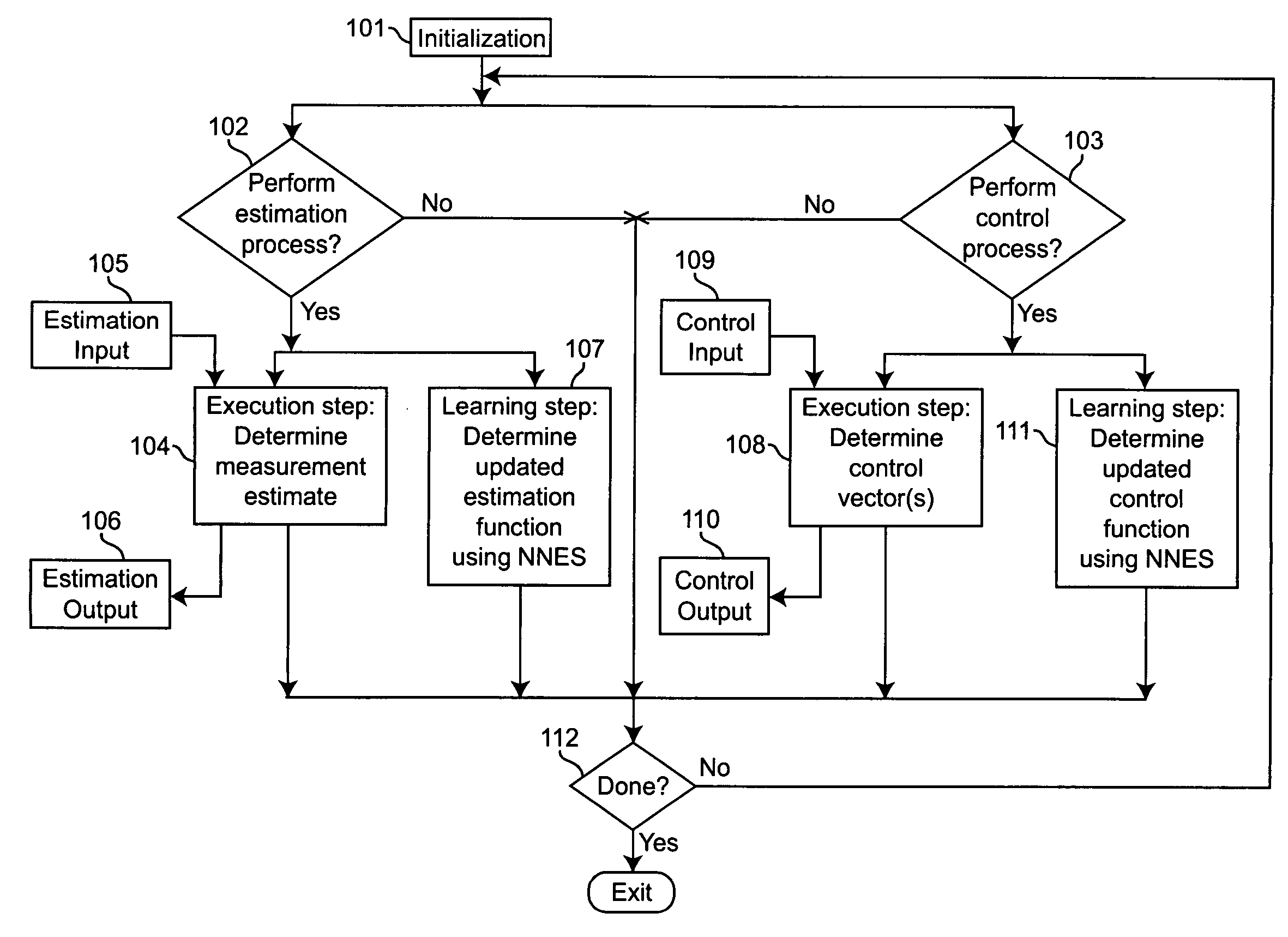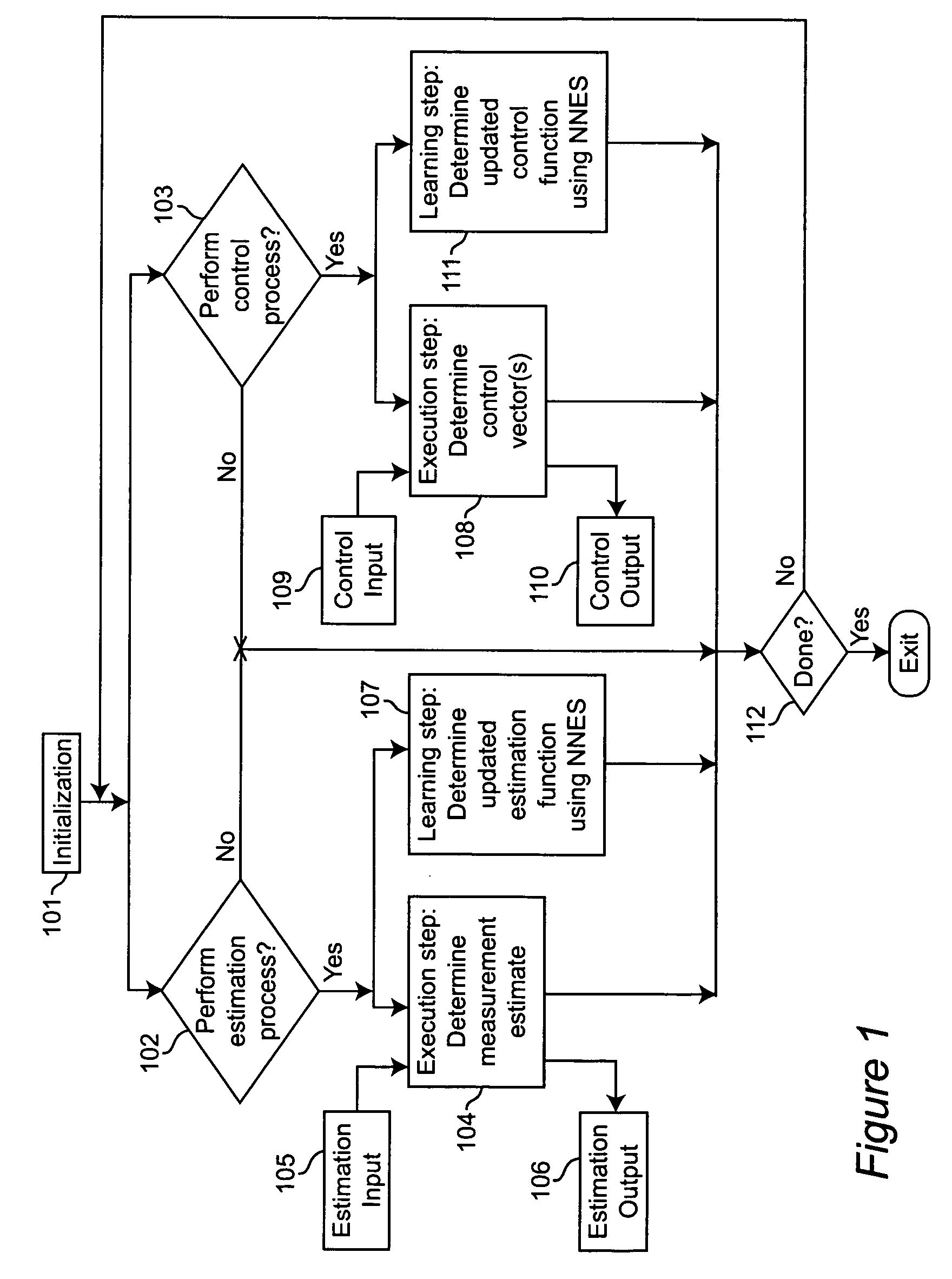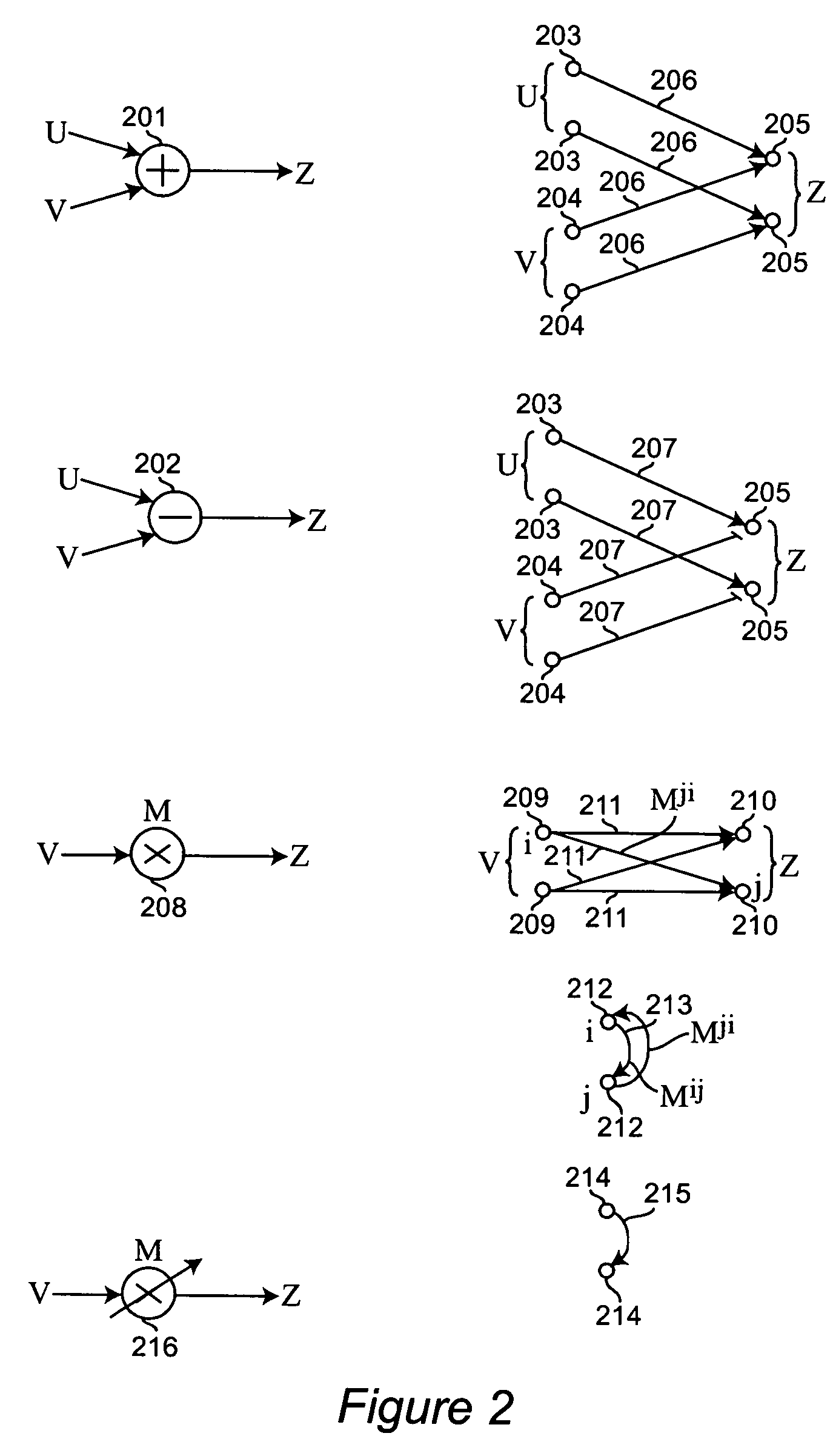Neural networks for prediction and control
a neural network and prediction technology, applied in the field of neural networks, can solve problems such as the “learning rule” failing to learn a kf matrix, even approximately, and the solution is not strictly optimal in general
- Summary
- Abstract
- Description
- Claims
- Application Information
AI Technical Summary
Benefits of technology
Problems solved by technology
Method used
Image
Examples
Embodiment Construction
[0066]FIG. 1 is a block diagram showing the major steps taken in performing estimation and / or control in accordance with the teachings of the present invention. At step 101, the estimation and / or control processes are initialized. If an estimation process is to be performed, this initialization comprises specifying an estimation error criterion, a class of allowed estimation functions, and an initial estimation function selected from the class of allowed estimation functions. If a control process is to be performed, this initialization comprises specifying a control cost criterion, a class of allowed control functions, and an initial control function selected from the class of allowed control functions. Steps 102 and 103 may be performed sequentially in either order, or in parallel. At step 102, it is determined whether an estimation process is to be performed. If it is, then steps 104 and 107 are performed. These steps may be performed sequentially in either order, or in parallel. ...
PUM
 Login to View More
Login to View More Abstract
Description
Claims
Application Information
 Login to View More
Login to View More - R&D
- Intellectual Property
- Life Sciences
- Materials
- Tech Scout
- Unparalleled Data Quality
- Higher Quality Content
- 60% Fewer Hallucinations
Browse by: Latest US Patents, China's latest patents, Technical Efficacy Thesaurus, Application Domain, Technology Topic, Popular Technical Reports.
© 2025 PatSnap. All rights reserved.Legal|Privacy policy|Modern Slavery Act Transparency Statement|Sitemap|About US| Contact US: help@patsnap.com



